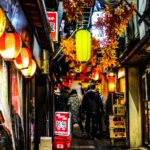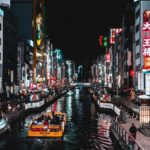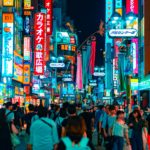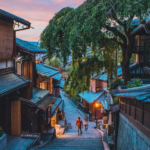Japan, renowned for its rich cultural heritage and technological advancements, has captivated the world with its diverse landscapes and vibrant cities. But beyond its traditional temples and bustling urban centers lies a unique fusion of fiction and reality. Anime, a distinct form of Japanese animation, has gained a global following, drawing enthusiasts to explore the very places that inspired these animated worlds. In this article, we embark on a captivating journey through Japan, visiting locations that mirror scenes from beloved anime series.
Want to see some of these locations in person? Travel to Japan on our Anime Tour!
Tokyo: A Melting Pot of Anime Wonders
The sprawling metropolis of Tokyo is a vibrant canvas that paints the backdrop for countless shows and movies. From the bustling streets of Shibuya to the serene gardens of Ueno, Tokyo’s diverse neighborhoods and landmarks have left an indelible mark on anime.
Akihabara – Electric Town and Otaku Paradise
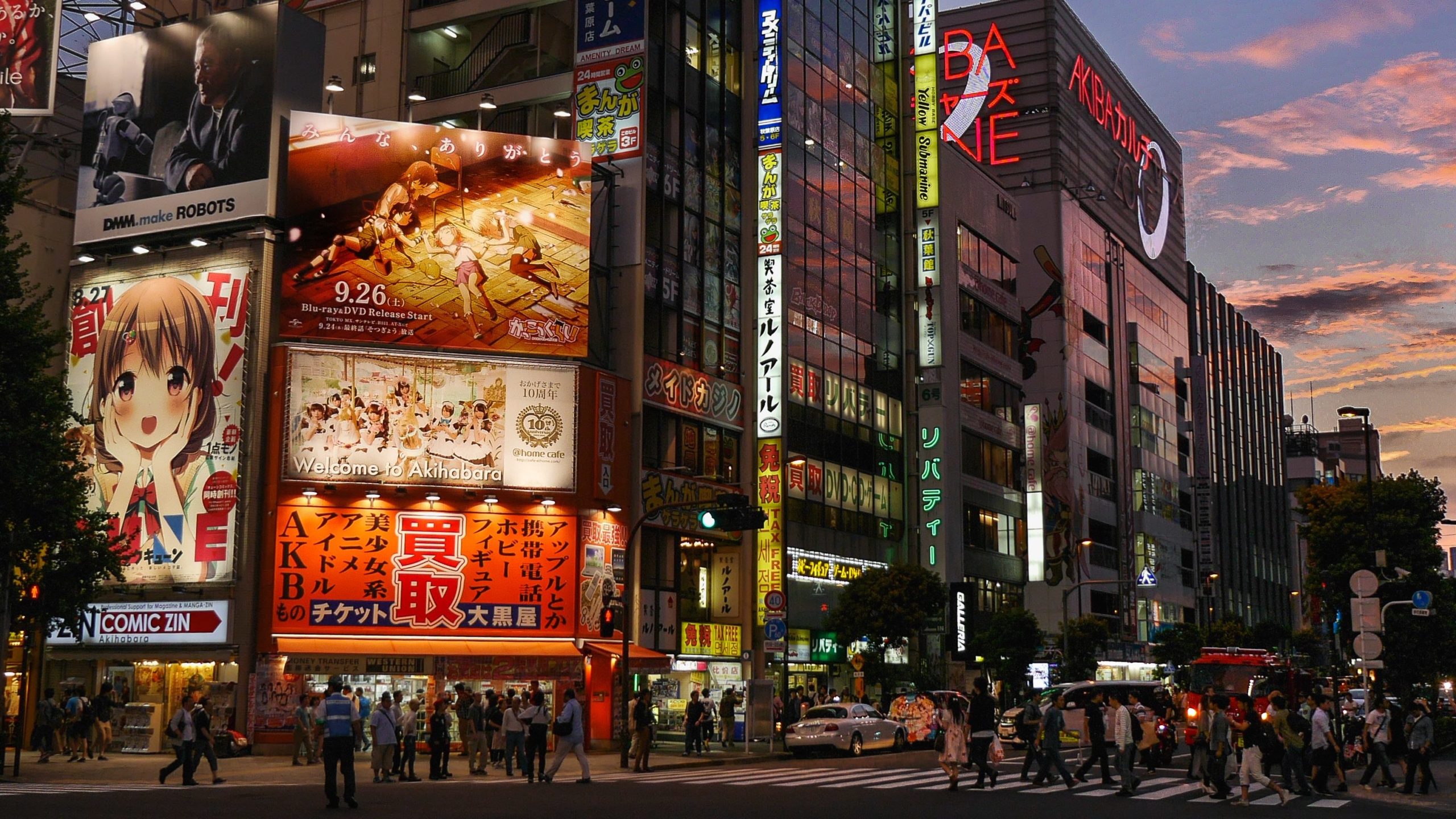
Akihabara, often referred to as the “Electric Town,” pulses with neon lights, towering billboards, and a fervent energy that mirrors its portrayal in anime. The district is a haven for otaku – enthusiasts of anime, manga, and video games. If you are fortunate enough to find yourself there there are a lot shops worth visiting. Iconic series like “Steins;Gate” pay homage to the district’s vibrant atmosphere, featuring its streets bustling with characters that echo the real-life crowds.
Ikebukuro – Durarara!! and Urban Legends
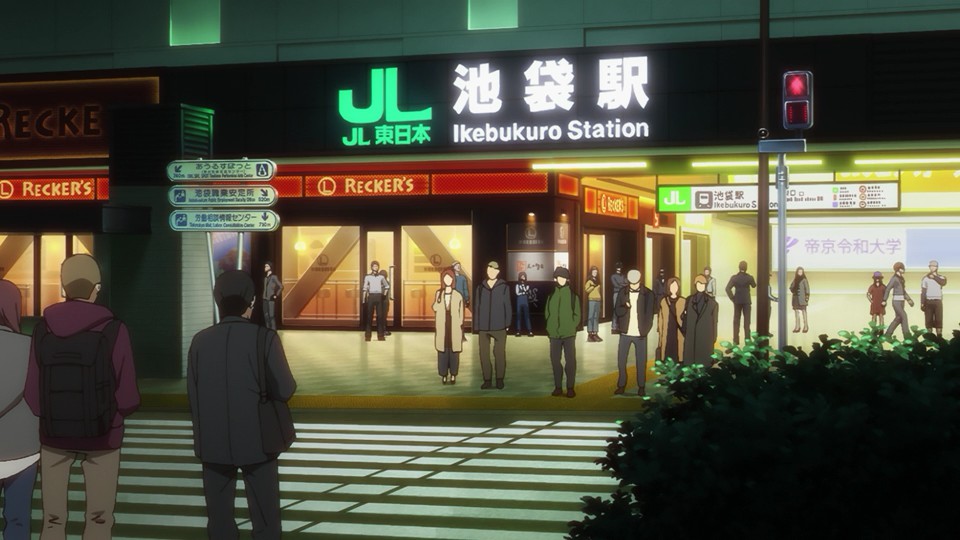
“Ikebukuro,” the setting for “Durarara!!,” is an intriguing blend of the ordinary and the supernatural. The series reflects the district’s actual reputation as a hub of peculiar urban legends and uncanny occurrences. By visiting Ikebukuro’s Sunshine City and its surrounding streets, fans can immerse themselves in the atmosphere that gave rise to the show’s mysterious narrative.
Odaiba – Gundam and Futuristic Landscapes
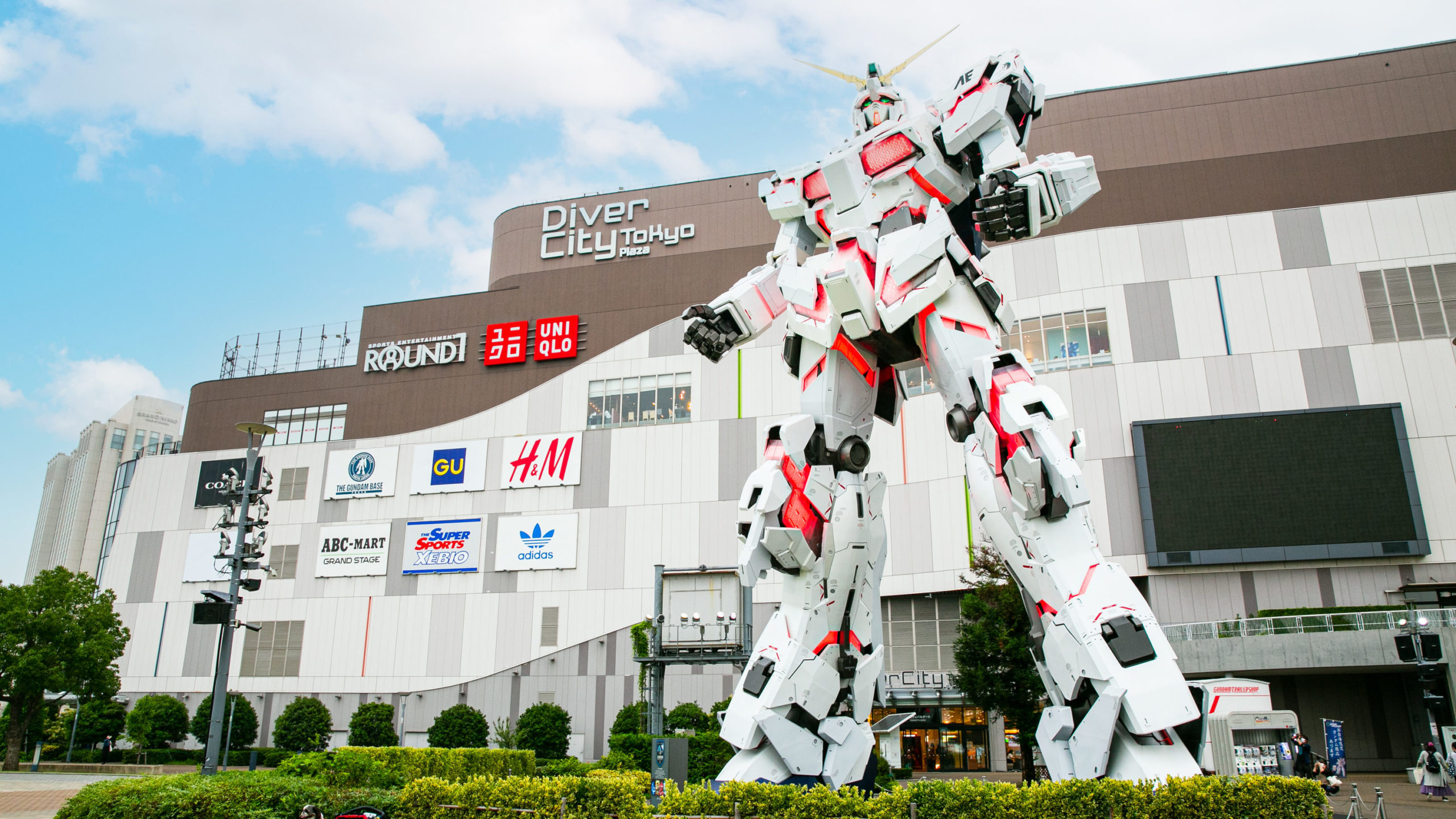
The artificial island of Odaiba has inspired anime such as “Mobile Suit Gundam Unicorn” with its futuristic architecture and iconic life-sized Gundam statue. The juxtaposition of advanced technology against Tokyo Bay’s serene waters creates a dynamic setting that captures the essence of science fiction.
Jujutsu Kaisen
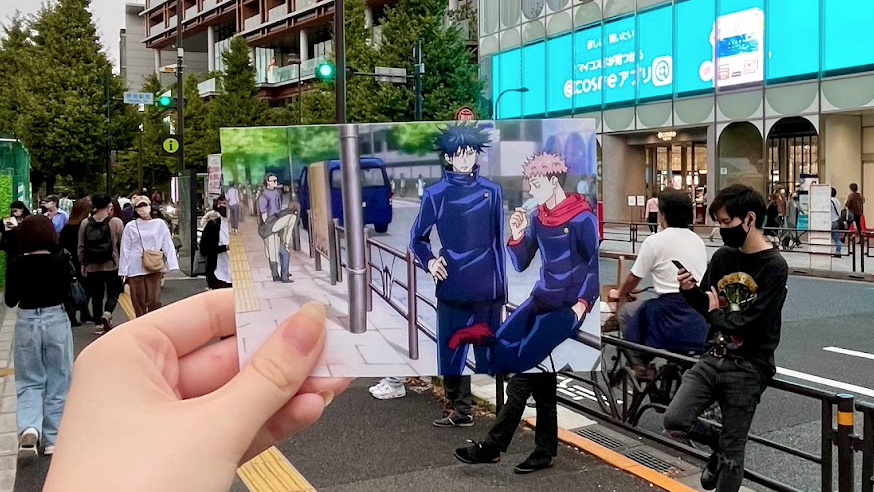
The events in “Jujutsu Kaisen” primarily take place in various locations in Tokyo, Japan. While the anime doesn’t specify exact real-world locations, it incorporates elements of Tokyo’s urban landscape and culture to create a fictionalized version of the city within the story.
Shibuya Crossing, one of Tokyo’s most famous landmarks, makes an appearance in the show. It’s often depicted as a bustling and crowded urban area, reflecting its real-world counterpart.
Kyoto: Where Tradition Meets Anime
While Tokyo is a modern epicenter of anime, Kyoto offers a more traditional and historical backdrop, seamlessly intertwined with the medium’s imaginative worlds.
Fushimi Inari Taisha – Inari and Shrine Spirits
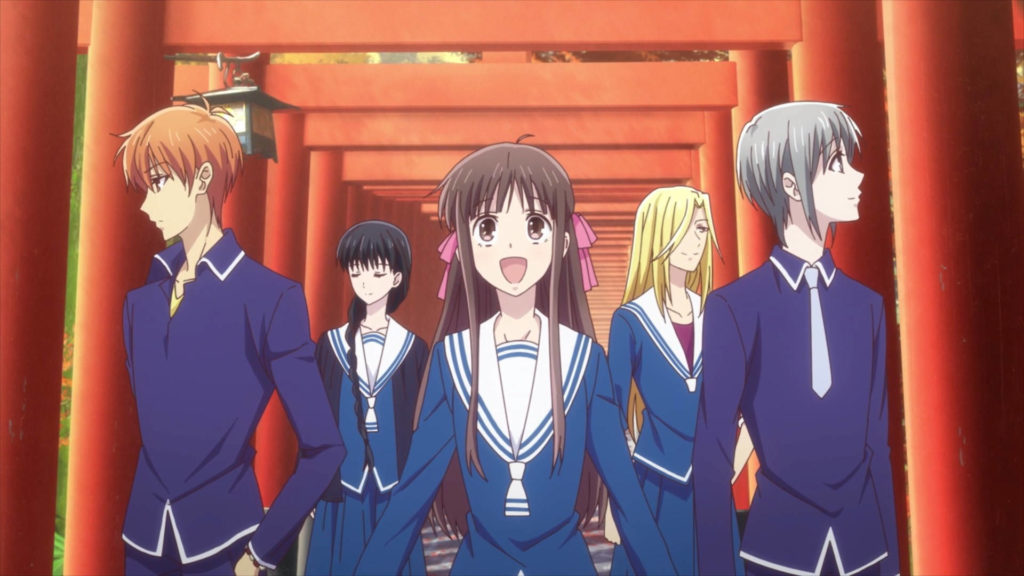
“Fruits Basket,” a beloved show, draws inspiration from Fushimi Inari Taisha, a stunning Shinto shrine famous for its vibrant torii gates that wind through the forested hillside. Just as the shrine in the anime is home to the twelve zodiac spirits, visitors can traverse the real torii gates, experiencing the same enchanting ambiance.
The Mystical Byodo-in Temple in Uji
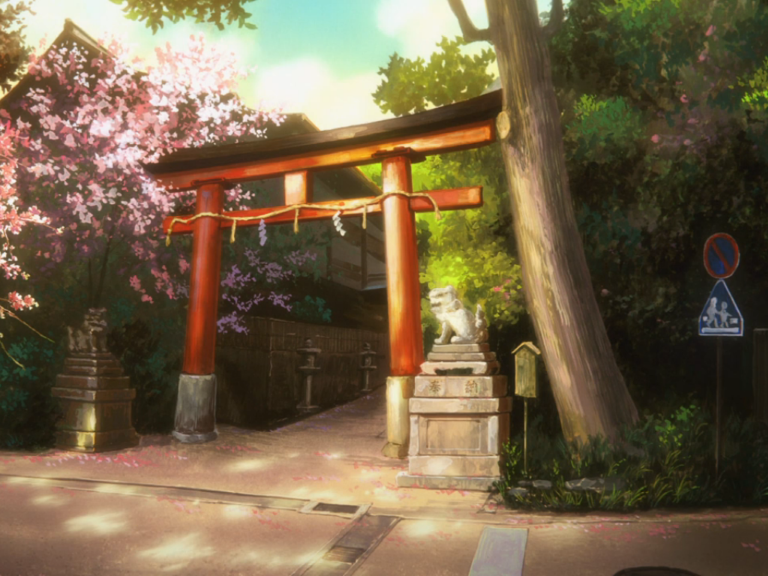
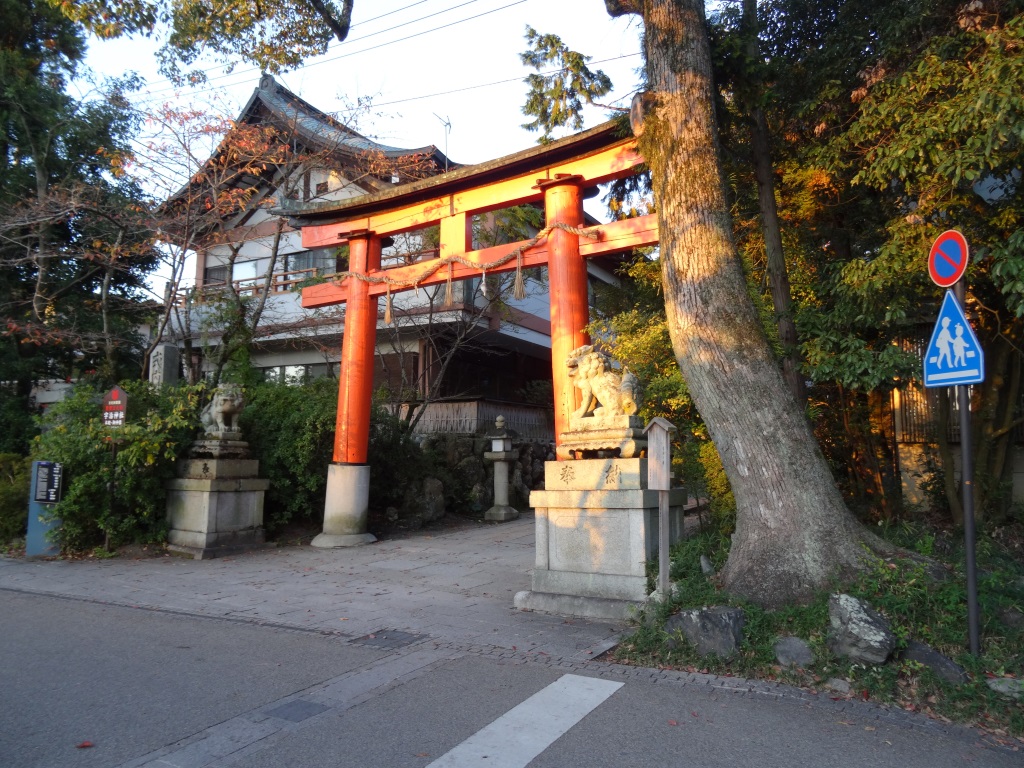
“Sound! Euphonium” (Hibike! Euphonium) is beautifully crafted and takes place in Uji, a city near Kyoto, offering viewers a glimpse into the world of a high school concert band. Uji is home to the serene Byodo-in Temple, a UNESCO World Heritage Site. This temple inspired scenes in “Sound! Euphonium.” While in Uji, you can visit the temple and appreciate its tranquil surroundings.
Aomori: A Tale of Spirits and Festivals
Aomori Prefecture, steeped in folklore and natural beauty, has inspired tales and art that celebrate its rich cultural heritage.
Nebuta Festival – “Princess Mononoke” and Giant Floats
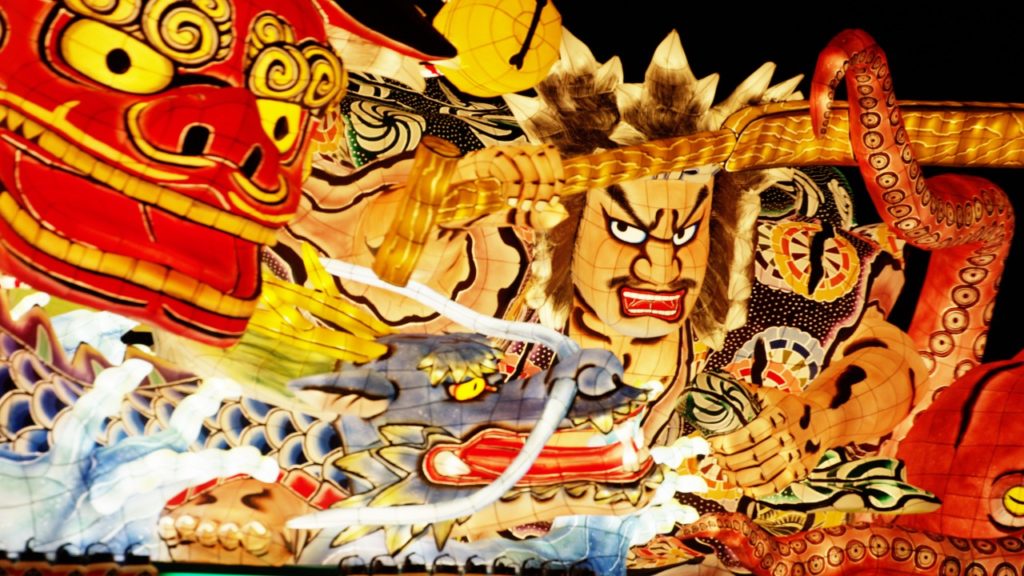
The Nebuta Festival, celebrated in Aomori City, features enormous illuminated floats depicting mythical figures and historical characters. The festival’s grandeur and awe-inspiring visuals influenced Studio Ghibli’s “Princess Mononoke,” enriching the film’s mythical world with the spirit of Aomori’s own traditions.
Lake Towada – “The Girl Who Leapt Through Time”
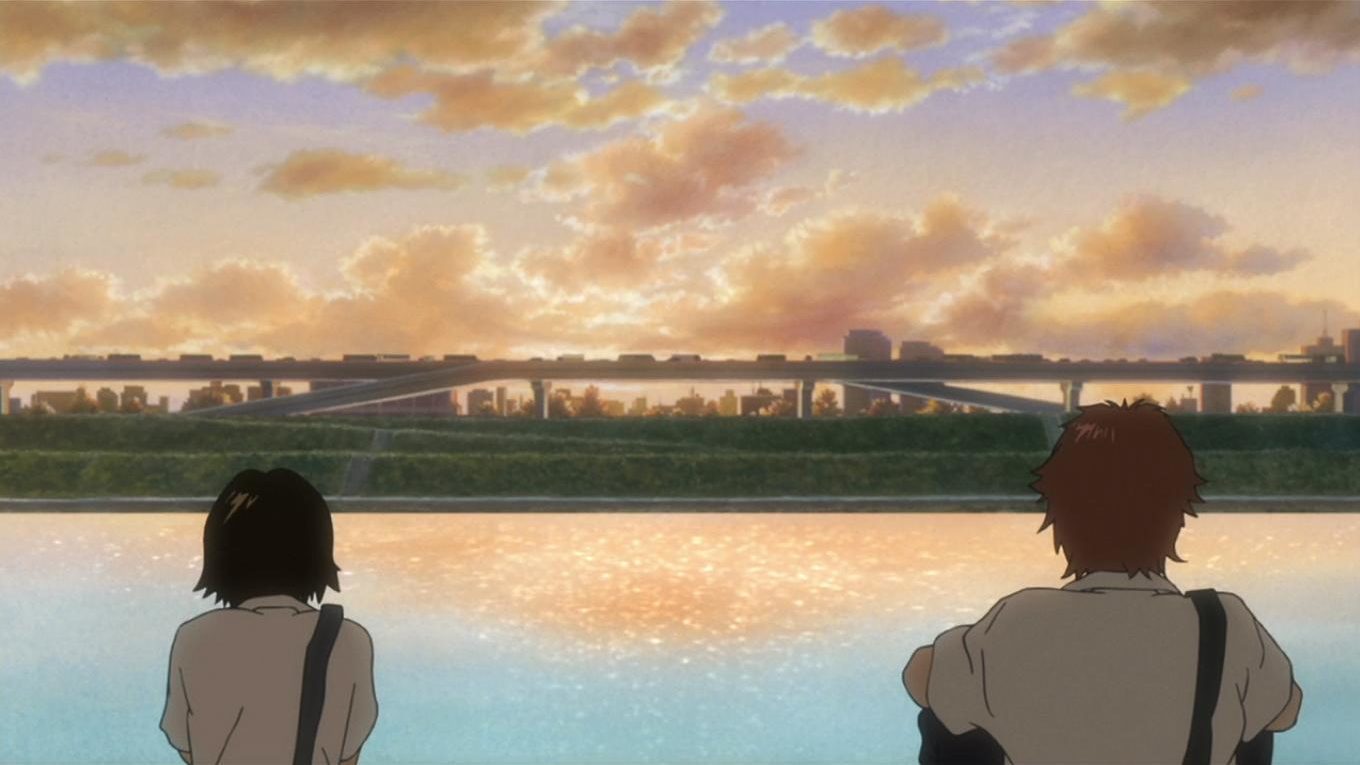
The tranquil Lake Towada, as portrayed in “The Girl Who Leapt Through Time,” captures the serenity of its real-world counterpart. Visitors can appreciate the beauty of the lake and its surroundings, where the boundaries of time and reality seem to blur.
Hokkaido: Wilderness and Inspiring Landscapes
Hokkaido’s breathtaking landscapes and untamed wilderness serve as a compelling backdrop for anime that explore the beauty of nature.
Biei and Furano – “March Comes in Like a Lion”

The anime “March Comes in Like a Lion” captures the essence of Biei’s picturesque fields and Furano’s vibrant flower gardens. As viewers follow the protagonist’s journey, they can also explore these real-world locations, experiencing the same serenity that the anime evokes.
Shiretoko Peninsula – “Golden Kamuy”
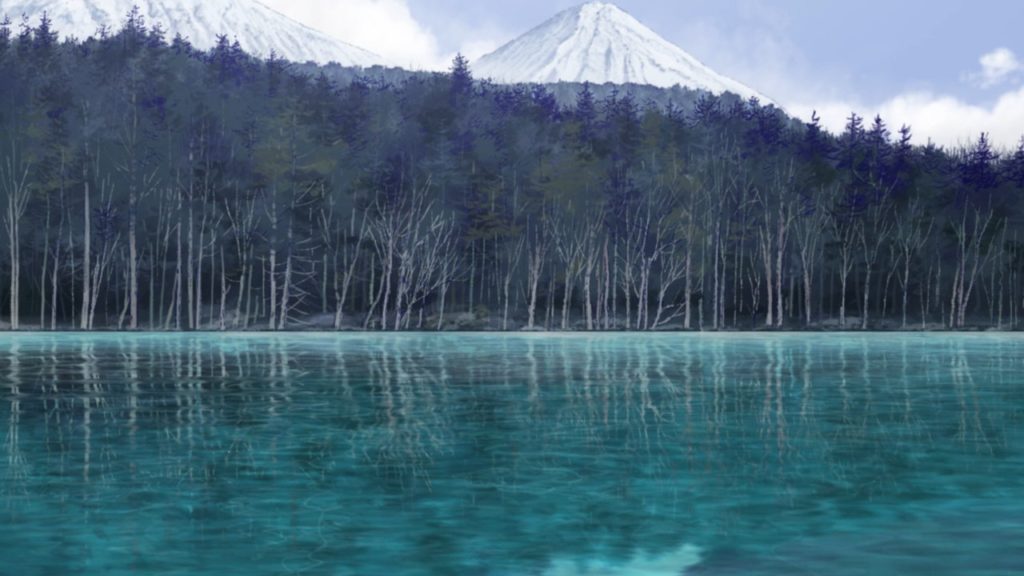
The rugged landscapes of the Shiretoko Peninsula, depicted in “Golden Kamuy,” are not only visually striking but also reflect the untamed spirit of the anime. Exploring this wilderness allows fans to connect with the characters’ adventures on a deeper level.
Hiroshima: Resilience and Reflection
Hiroshima, a city with a poignant history, has found its way into anime narratives that reflect on human resilience and the aftermath of tragedy.
Hiroshima Peace Memorial Park – “In This Corner of the World”
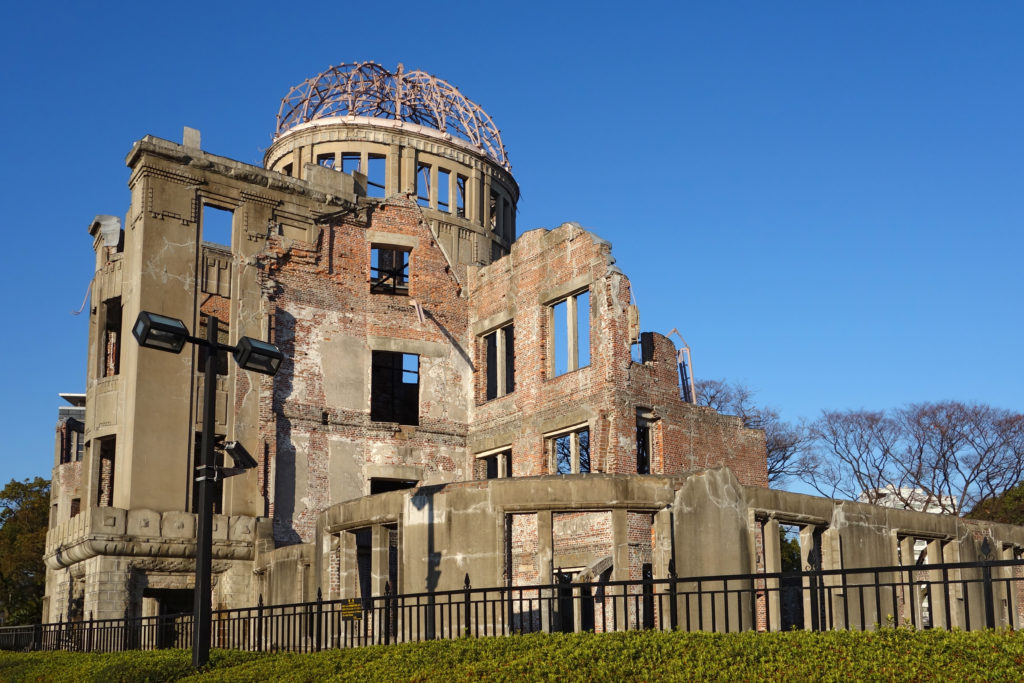
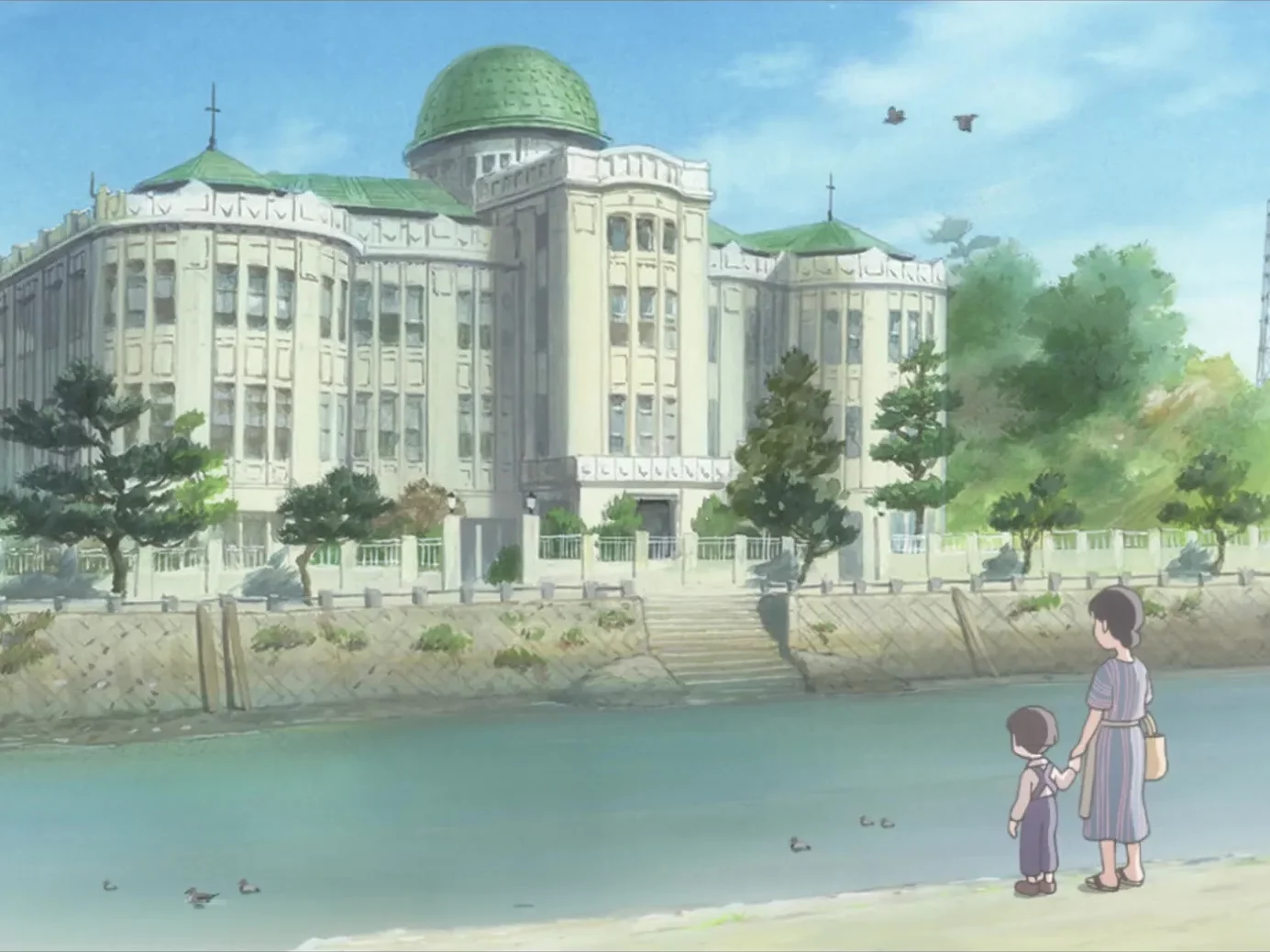
The anime film “In This Corner of the World” transports viewers to the World War II era and showcases the Hiroshima Peace Memorial Park. This real park, dedicated to the memory of the atomic bombing, allows visitors to reflect on the importance of peace and the indomitable human spirit. If you ever have a chance to visit Hiroshima, it is a somber reminder of why peace is so important.
Kanagawa: Coastal Charms and Urban Legends
Kanagawa Prefecture’s diverse landscapes have sparked inspiration for anime ranging from coastal adventures to supernatural mysteries.
Kamakura – “Anohana: The Flower We Saw That Day”
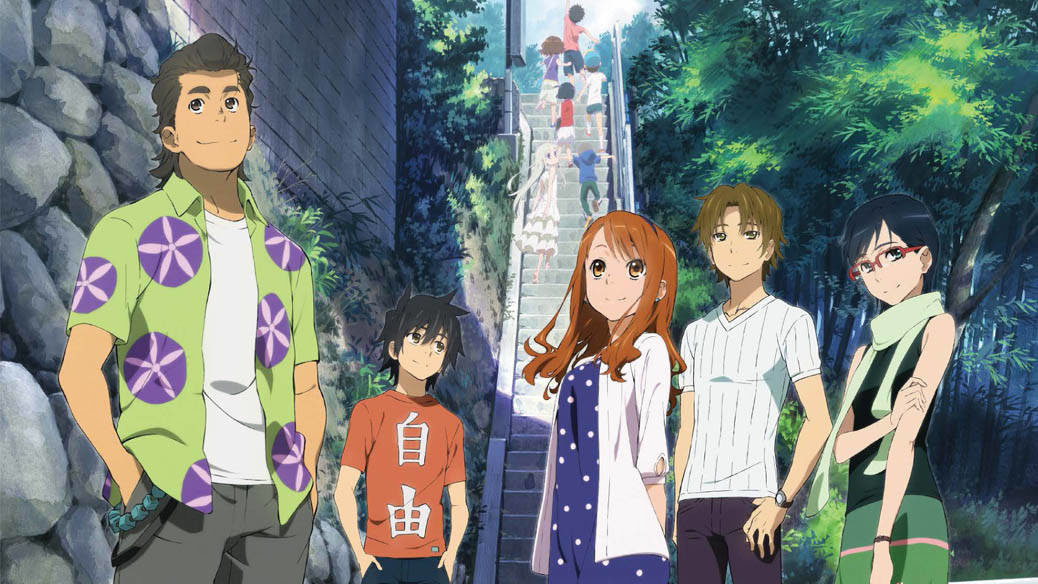
The coastal town of Kamakura, featured in “Anohana: The Flower We Saw That Day,” serves as a poignant setting for the anime’s emotional narrative. Visitors can explore Kamakura’s scenic beauty and historical temples, connecting with the heartfelt themes of friendship and loss.
Enoshima – “Love Live! Sunshine!!”
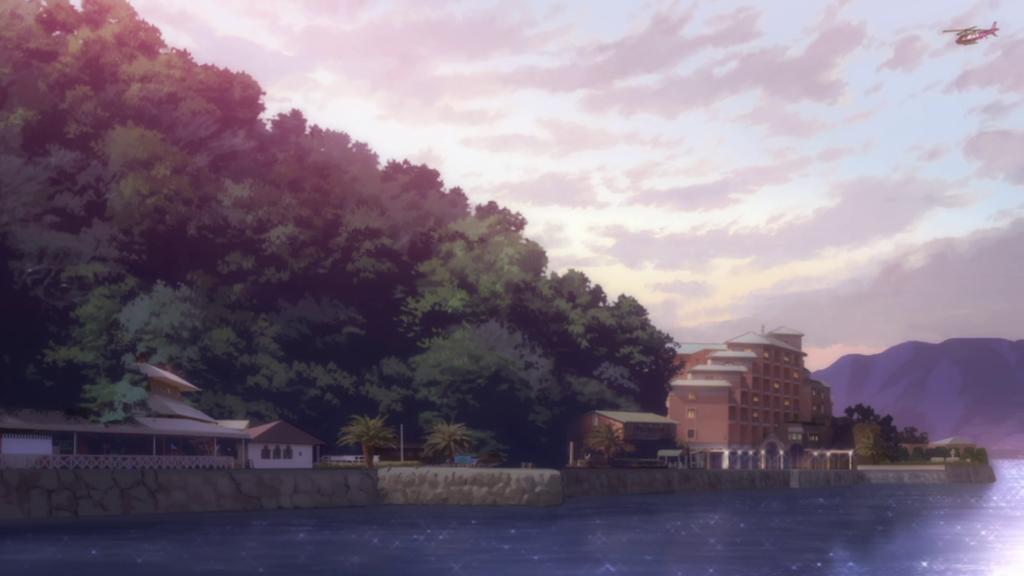
The idol-themed anime “Love Live! Sunshine!!” draws inspiration from Enoshima, a charming island known for its beaches and scenic views. Fans can experience the idyllic atmosphere that gave life to the anime’s vibrant characters and performances.
When Fiction Becomes Reality
Japan’s anime-inspired locations offer enthusiasts a unique opportunity to traverse the boundary between fiction and reality. From the bustling streets of Tokyo to the tranquil shrines of Kyoto, and from the mystical festivals of Aomori to the pristine wilderness of Hokkaido, each location resonates with the spirit of the anime that drew inspiration from it.
As you embark on your own anime pilgrimage, remember that these places are not just settings for fictional stories but living embodiments of the creative imagination that anime encapsulates. Whether you’re a devoted anime fan or a curious traveler, exploring these locations will not only deepen your appreciation for the art form but also allow you to experience firsthand the magic of anime in the very landscapes that inspired it.

